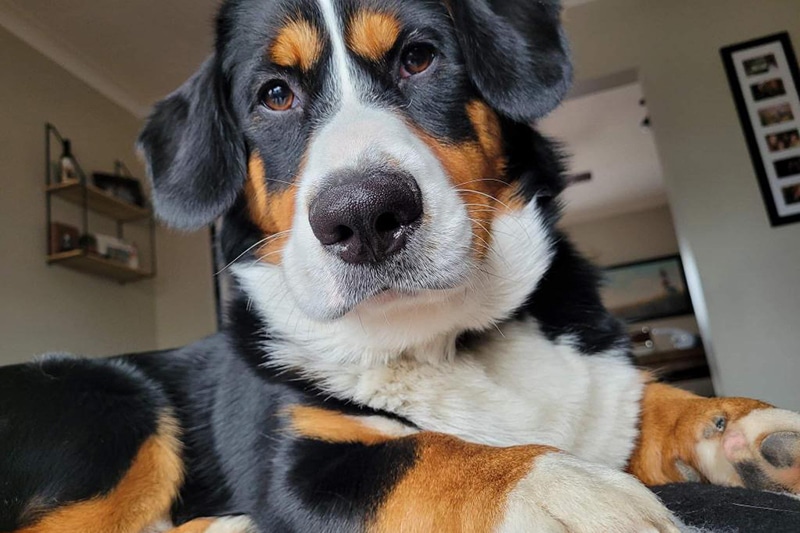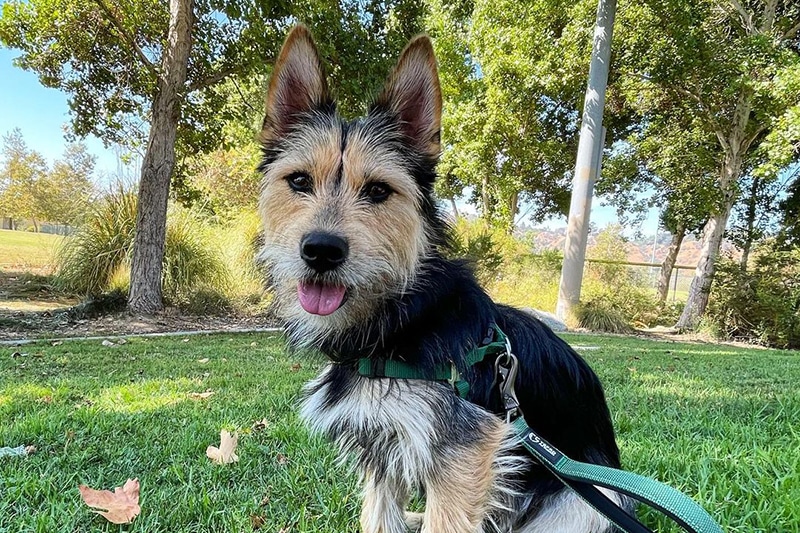The Corgi Husky mix is a curious mixed-breed dog that combines the genes of the Pembroke Welsh Corgi and the Siberian Husky. This combination produces a medium-sized dog that borrows its physical appearance, temperament, possible health issues, and general disposition from both parent breeds.
As a designer breed, the Corgi Husky mix is relatively new – most designer dog breeds in the United States only began appearing in the 1990s and early 2000s. Despite its recent appearance, the Corgi Husky is one of the most popular Corgi mixes in the country.

To understand where the Corgi Husky mix comes from, we’ll need to examine its parent breeds. Let’s take a deep dive into the histories, temperaments, health, exercise requirements, and other pertinent information about the Pembroke Welsh Corgi and the Siberian Husky.
Corgi Husky Mix – At a Glance
| Weight: | 20 – 50 pounds |
| Height: | 13 – 15 inches |
| Lifespan: | 12 – 15 years |
| Coat Colors: | Sable, red, brindle |
| Temperament: | Active, energetic, affectionate, attention-seeking |
| Most Suitable For: | Active families, active single individuals, not suitable for apartment dwellers or the elderly |
What Does a Corgi Husky Mix Look Like?
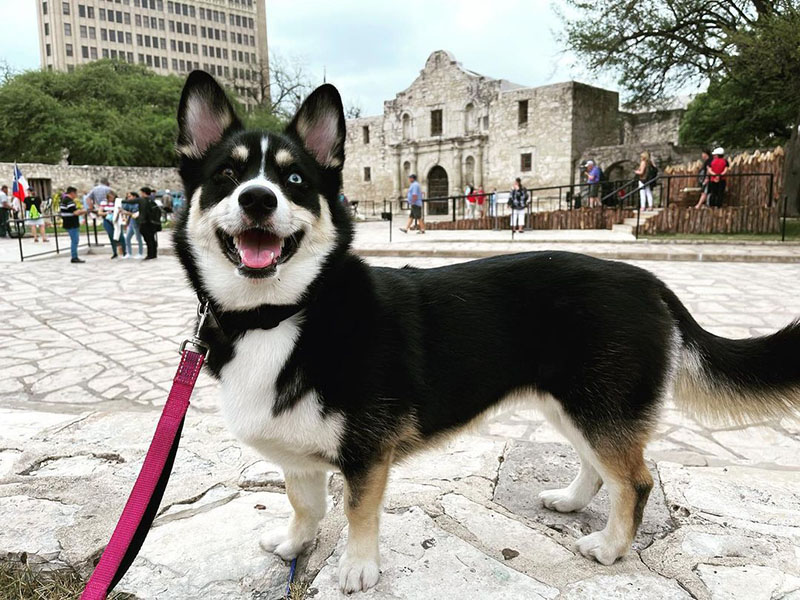
As with most designer dogs, their physical appearance tends to be a bit of a mystery, as different parts depend on the dominant genes.
The Corgi Husky mix will borrow its physical appearance from both parent breeds – though it will most likely more so resemble its Corgi parents. It will likely have a long body, with short legs – perhaps a little longer than your traditional Corgi – and a long, bushy tail, like the Husky.
Its most visible Husky trait is its eyes – some Huskies have either ice-blue eyes or a mix of blue and brown eyes. Depending on the predominant gene, your Corgi Husky mix will have short, thick furs, like the Corgi – or a double coat like the Siberian Husky.
Are you looking for a way to treat your furry friend? Sign up for our newsletter for a chance to win a free month of Barkbox!
The History of the Corgi Husky Mix
Designer dogs came to prominence in the United States in the 1990s and early 2000s. Many different breeds were caught up in this surge in popularity, including the Corgi Husky mix. While there’s little documentation available about when the breed first appeared, the Husky Corgi mix was likely the product of accidental breeding (initially).
However, one can certainly understand why people like the Husky Corgi mix. You’re blending characteristics of two of the most friendly, lovable, loyal breeds out there. The Corgi’s legendary friendliness, combined with the Husky’s love of adventure and being outdoorsy, makes for the perfect active dog for the active family unit.
To better understand where the Corgi Husky mix comes from, let’s examine it parent breeds in detail.
The History of the Siberian Husky
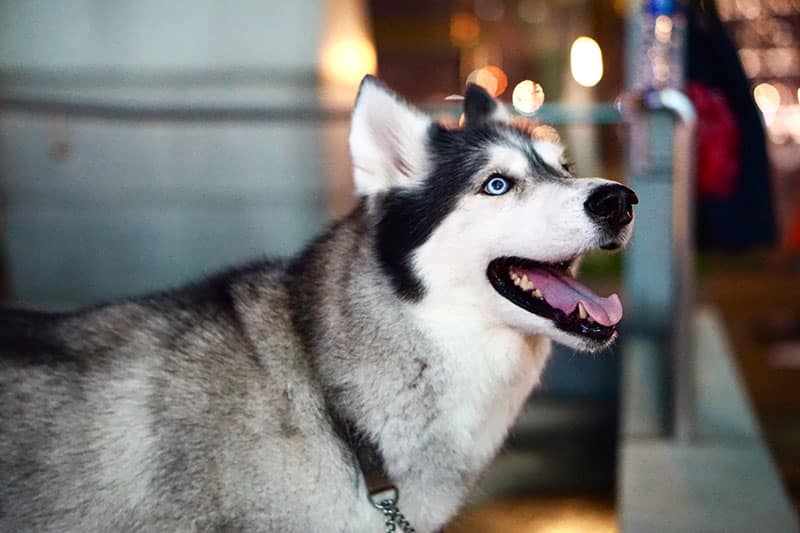
From the frozen plains of Siberia, the Siberian Husky hails from the Chukchi Peninsula, where the Chukchi People bred it to transport people and goods across the tundra of Eastern Russia. Renowned for its energy, resilience, strength, and lovable, friendly nature – the Siberian Husky made the perfect utility-companion combination for the Chukchi People.
In 1908, a Russian fur trader imported the Husky to Alaska, where it became a staple among Alaskan communities and also an integral part of the Gold Rush – as Huskies were used to transport people and goods from Alaska to the Yukon.
Today, most Siberian Huskies in the West are kept as family pets. However, they are still used in remote Northern Canada and Alaska as working dogs.
How Popular Are Huskies in the United States?
Given their gorgeous physical appearance and friendly nature, Siberian Huskies are one of the most sought-after breeds in the world. Finding a purebred Husky can be challenging and very expensive.
Despite this, the Siberian Husky remains a popular American household pet and the 19th most popular dog in the country in 2021, according to the American Kennel Club.
Who Are Huskies a Good Dog For?
It is said that Huskies make the ideal family pet. Their outgoing nature, energy levels, and overall friendliness are well-suited to the modern American active family. Combining this with their history as pack animals, Siberian Huskies live best as one of the pack.
Unfortunately, Siberian Huskies aren’t well-suited for apartment living (they can suffer from separation anxiety and exhibit destructive behavior as a result). They’re better outside or in a home with lots of land to run. They’re also not well-suited for the elderly due to their active nature and outgoing personality – it is a lot to keep up with!
How Did Huskies Come About?
Siberian Huskies were first bred by the Chukchi People of the Chukchi Peninsula in Eastern Siberia. Bred to run and be outside in frigid temperatures, with thick double coats to keep them warm and massive paw pads to give them a large footprint, the Siberian Husky is the ultimate extreme weather/outdoor dog.
When Did We First Cross-Breed The Husky?
The Siberian Husky is one of the most popular crossbreeds in the United States – largely due to its popularity as a pet. They have many desirable traits that can complement other dogs’ personalities.
Their affectionate nature, gorgeous physical appearance, and high-octane energy levels combine to make it a very popular cross. Huskies can be crossed with any medium-to-large dog to make a fantastic mixed-breed pup. Mostly, Huskies are crossed with other dogs for that ‘husky parent’ look.
The first instance of crossbreeding of the Siberian Husky may well be the Alaskan Husky. While no hard evidence exists, the Siberian Husky was likely crossbred with other native Alaskan hunting dogs to produce a Husky cross that became the Alaskan Husky. Other dogs with striking physical similarities to the Siberian Husky include the Alaskan Malamute.
The History of the Corgi
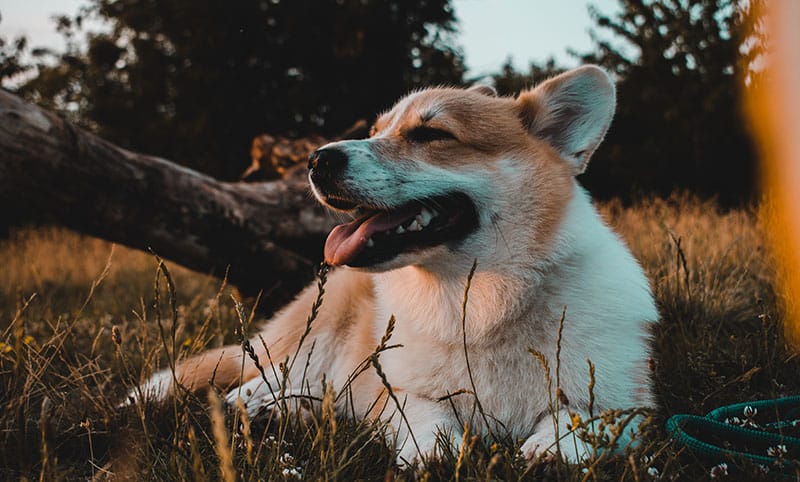
The Pembroke Welsh Corgi has a history that is part myth and legend and part cold, hard facts. Some say the Corgi dates back to the myths and folklore of Wales and are the dogs that faeries used to ride on.
However, the real history of the Welsh Corgi is slightly less exotic. They were transported to Wales by Flemish weavers, who brought their dogs with them from what is modern-day Belgium, to settle in Wales in 1107 AD. This makes the Corgi an extremely old dog breed in the British Isles – one of the oldest.
The Corgi was originally bred as a herding dog and was used to herd cattle for the Flemish and continued in this role for centuries. It is only the in the last four centuries or so that the Corgi has become a companion pet, leaving its herding background at the house door.
Corgis – specifically, Pembroke Welsh Corgis were made popular by Queen Elizabeth and were beloved pets of Her Late Majesty. Corgis are incredibly popular due to their friendly personality and outgoing nature, and they make wonderful family pets.
How Popular Are Corgis in the United States?
In the United States, “the Corgi” is split into two breeds – the Pembroke Welsh Corgi and the Cardigan Welsh Corgi. The most popular of these breeds is the Pembroke Welsh Corgi, the Corgi mix most frequently chosen as the Corgi parent for mixed-breed dogs.
The Pembroke Welsh Corgi fares well in the United States dog popularity rankings. In 2021, it was the 11th most popular dog in the country, according to the American Kennel Club. Meanwhile, its cousin, the Cardigan Welsh Corgi, was the 67th most popular dog in the country in 2021.
Who Are Corgis a Good Dog For?
Given their height and weight, friendly, outgoing nature, and calm temperament, Corgis make fantastic pets for almost anyone. Including the elderly and apartment-dwelling single individuals (if they’re fit for a Queen…).
Corgis will require plenty of exercise, so if you’re considering getting a Corgi (or a Corgi mix), be prepared to walk your Corgi for at least thirty to forty-five minutes daily.
If you have children, be aware that the Corgi’s herding instinct may kick in, and they may try to ‘herd’ your little one(s).
How Did Corgis Come About?
Corgis were first brought to Wales by Flemish weavers around 1107AD, when they migrated to the British Isles from modern-day Belgium. They were originally a herding breed and used primarily to herd cattle and sheep in the foothills of Wales.
As the breed grew in popularity and migrated to other parts of the British Isles, they would become royalty’s firm favorites and eventually be Queen Elizabeth II’s cherished dogs.
When Did We First Cross-Breed The Corgi?
The Corgi is an extremely popular dog, even as a purebred, so it’s no surprise that many people would like to own a Corgi mix. While the first instance of crossbreeding Corgis is lost to the sands of time, we know that since the popularity accelerated in the 1990s and early 2000s, both types of Corgis have been popular crosses with other dogs.
Being a small to medium-sized dog, female Corgis can be naturally crossed with other animals or crossed using IVF treatment. Popular Corgi crosses include Corgi Inus, Retriever Corgis, Bull Corgi, and the Husky Corgi mix.
Corgis are often routinely crossed with other dogs to create more active breeds or to give a herding drive to a dog if the intent is to create a working dog.
How Important Is a Dog’s Temperament to Your Family?
One of the most important responsibilities of a prospective dog owner is to research the possible temperament of the dog you’re looking to adopt or purchase. Temperamental differences between dogs and their owners are partially natural and healthy. However, the wrong type of dog being with the wrong family can be catastrophic in certain circumstances.
For example, if you want to adopt a Corgi mix, you should be prepared for the energetic nature of the Corgi. The daily exercise requirements are the nature of the Corgi as a herding breed. Researching what your prospective dog could be like is key to being a responsible owner and pet parent.
What is the Temperament of the Corgi Husky Mix?
Being a mixed breed dog, the Husky Corgi mix is likely to borrow a healthy amount of its temperament from both parent breeds. The Husky has near-boundless energy and can be excitable around strangers. Meanwhile, the Corgi (though not quite as energetic, but they aren’t slouches!) is a more aloof pet with a healthy suspicion of strangers.
The Corgi and Husky are both very loving and affectionate dog breeds, so you can expect your Husky Corgi mix to be so. You might expect your Husky’s playful personality to come through in a Husky Corgi mix, and it likely will. So, too, may your Corgi’s herding drive.
Ultimately, you can expect a very friendly, active breed that isn’t quite as bouncy as it might be were it a purebred Husky.
Is The Corgi Husky Mix Friendly?
The Corgi Husky mix may break the friendliness scale! Undoubtedly, the Husky is one of the most friendly dog breeds out there – almost to the point of annoyance. Meanwhile, the Pembroke Welsh Corgi is much more reserved.
Is The Corgi Husky Mix Easy to Train?
Given that both parent breeds were bred to follow commands, you can expect your Corgi Husky mix to be quite easy to train. If you have difficulties, try positive reinforcement before resorting to behavioral training. This difficulty will training can stem from the clash of personalities between the over-excited Husky and the reserved, eager-to-please Corgi.
How Much Can A Corgi Husky Mix Weigh?
The average weight of a Corgi Husky mix is between 20 and 50 pounds.
How Tall Can A Corgi Husky Mix Get?
The average height of Corgi Husky Mix is between 13 and 15 inches tall.
Similar Sized Breeds
There are a few similar sized breeds to the Corgi Husky mix. These include the English Bulldog, the Labrador Retriever, and the Border Collie.
Does the Corgi Husky Mix Shed?
Given that the Husky Corgi mix has Husky genes, you can expect it shed moderately throughout the year – however it is likely to shed heavily in the Spring and Fall, as it “blows” its coat twice a year to prepare for the changing of the seasons.
How Much Exercise Does A Corgi Husky Mix Require?
Given that both parent breeds are very energetic dogs, you can expect your Corgi Husky mix to be a very energetic dog requiring at least 45+ minutes of exercise daily. However, it is likely that your Corgi Husky mix will inherit the short legs of the Corgi, so it won’t be able to walk as fast or far as its other parent breed.
How Long Can a Corgi Husky Mix Live?
The average lifespan of a Corgi Husky mix is between 12 and 15 years.
What Health Conditions Could the Corgi Husky Mix Have?
- Hip Dysplasia (hip joint inflammation)
- Intervertebral Disc Disease (IVDD) (spinal cord issues)
- Epilepsy (Neurological condition)
- Von Willebrand’s Disease (Wobbler’s Syndrome)
How Can You Find a Corgi Husky Mix Puppy For Sale?
Before you go searching for a Corgi Husky mix puppy for sale, we recommend you first consider adoption. There are so many Corgi Husky mixes that likely wind up in shelters, because they’re bred unintentionally and are just waiting to be adopted.
If you’re not having any success with in-person adoptions from your local vet or animal shelter, you should also consider checking out AdoptAPet.com, that allows you to search by breed from your local area.
How Much Does a Corgi Husky Mix Puppy Cost?
The average of a Corgi Husky mix puppy is between $300 and $1000 and varies by breeder and location. Yet another reason to consider adoption first, as you’ll pay a fraction of the price of going through a breeder – and avoid accidentally stumbling upon a puppy mill.
If you’re looking for more information on breeders, you should read our article on how to find a reputable breeder and what to look for in the less-than desirable ones.
Is the Corgi Husky Mix the Right Breed For You?
The Corgi Husky Mix is the right breed for you if you’re looking for an active, outdoorsy companion pet. The Corgi Husky will demand a lot of your love, care, and affection. They will reward you with undying affection, love and care of their own. They are perfect for active families due to their friendly, gentle nature.
If you’re not convinced that the Corgi Husky mix is the right breed for you, consider checking our other breed guides.

